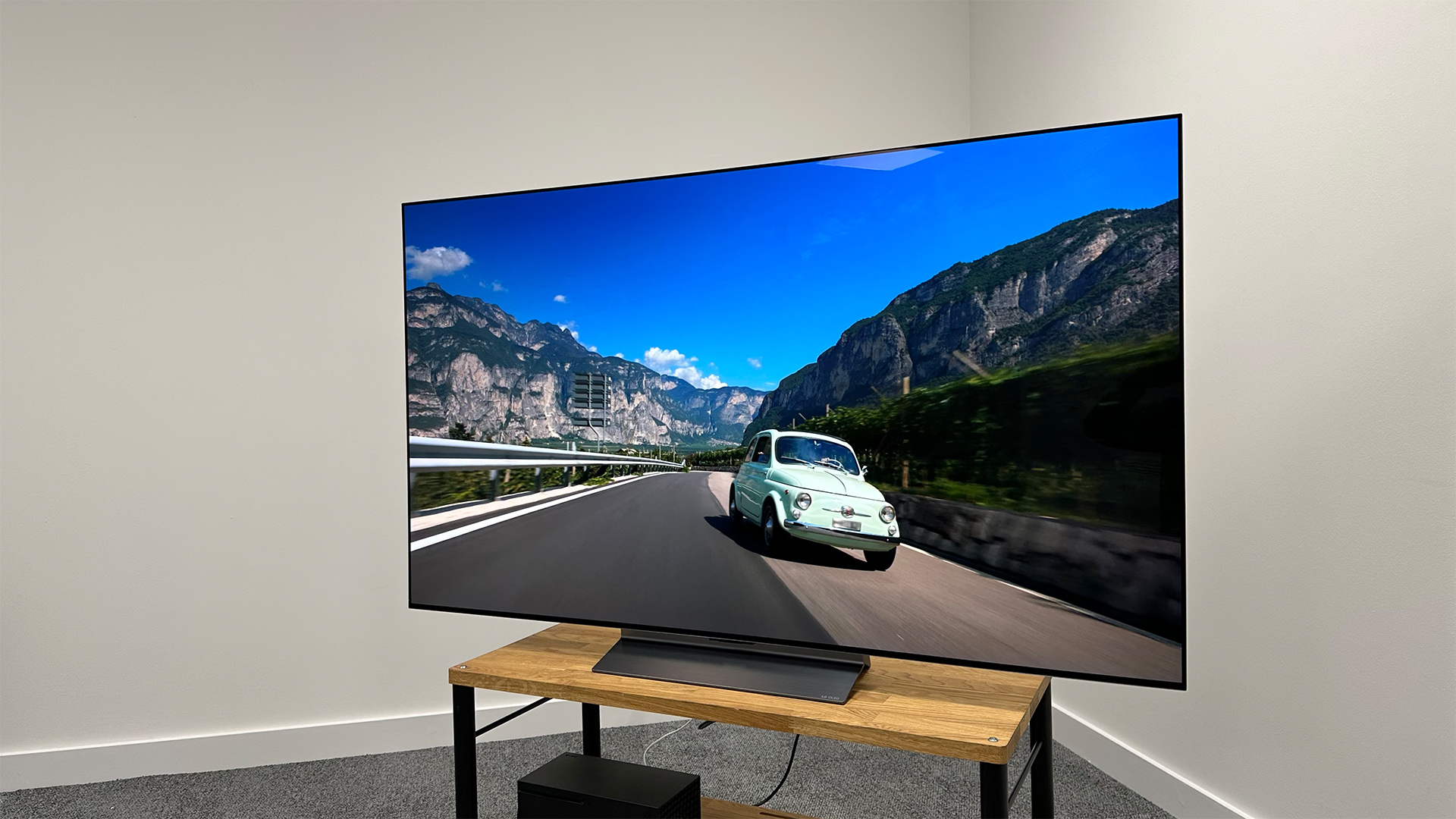What Hi-Fi? Verdict
The C3 is very similar to the C2 it replaces. That makes it a very good TV, but you can currently buy better for very similar money
Pros
- +
Balanced, authentic picture quality
- +
Flawless gaming spec
- +
Very user-friendly
Cons
- -
Only a minor upgrade on the C2
- -
More expensive than the C2
- -
Sony rival offers punchier pictures and sound
Why you can trust What Hi-Fi?
There was a time, not that long ago, when LG’s C-series and G-series models differed only in appearance and speaker systems. That changed in 2021 when that year’s G1 got a brighter panel than its C1 sibling. That brighter panel was added to the C-series with last year’s C2, but the G2 got a new heatsink, essentially preserving the performance gap between the two ranges.
For 2023, though, that performance gap has grown bigger than ever before, because while the new G3 boasts brand-new MLA technology, which takes OLED to significantly brighter heights, the C3 is strikingly similar to the C2 it replaces.
That, in itself, isn’t necessarily a problem. Last year’s C2 was a multi Award-winner and more of the same doesn’t have to be a bad thing. Even the increase in price over last year’s model, while a shame, wouldn’t in isolation be a big problem for the C3.
What is a problem is that this lack of significant upgrades and increase in price, when combined, have left the door open to LG’s rivals. And one such rival has already gleefully skipped through. So while the C3 is, like its predecessor, a very good TV, you can now buy better for roughly the same money.
Price

The 65-inch version of the LG C3 that we have before us is priced at £2900 / $2600 (around AU$5460) at launch. Its predecessor, the C2, launched at a price of £2699 / $2500 / AU$4495. That’s a bit of an increase, but not a huge one, and price rises are unfortunately par for the course right now.
What matters more is how the C3’s pricing compares to that of its rivals, and the 65-inch version of the excellent, recently reviewed Sony A80L (£2999 / $2600 / around AU$5650) is available for very similar money in the UK and exactly the same price in the States.
It does have to be said that the 55-inch and 77-inch versions of the C3 are more significantly cheaper than the equivalent A80L models in the UK (in the US all sizes are priced identically) and that LG OLEDs tend to receive bigger discounts over time than their Sony counterparts, but at the time of writing and at 65 inches, these TVs are very much price rivals – and that’s not particularly good news for the C3.
The latest hi-fi, home cinema and tech news, reviews, buying advice and deals, direct to your inbox.
Design

LG is sticking with the design it debuted with the C2, and we’ve genuinely no complaints about that. The narrow stand is elegant and gives the set a small footprint that makes it easy to find a home for, and while it's thicker at its thickest point than the uniformly thin G3 (4.7cm vs 2.4cm), that thick area – which houses the set’s connection, processing hardware and speakers – covers only a portion of the set’s rear, leaving the rest to be almost miraculously slim. The picture frame-like design of the G3 will still be preferable to some, particularly wall mounters, but to these eyes, the C3 is actually the more stylish and striking TV.
The C3, like the C2, is also incredibly light compared to the best 65-inch TVs, weighing just 16.6kg. That’s much lighter than the G3 (23.9kg) and Sony A80L (23.3kg), yet the C3 still feels like a very well-made product.
Features
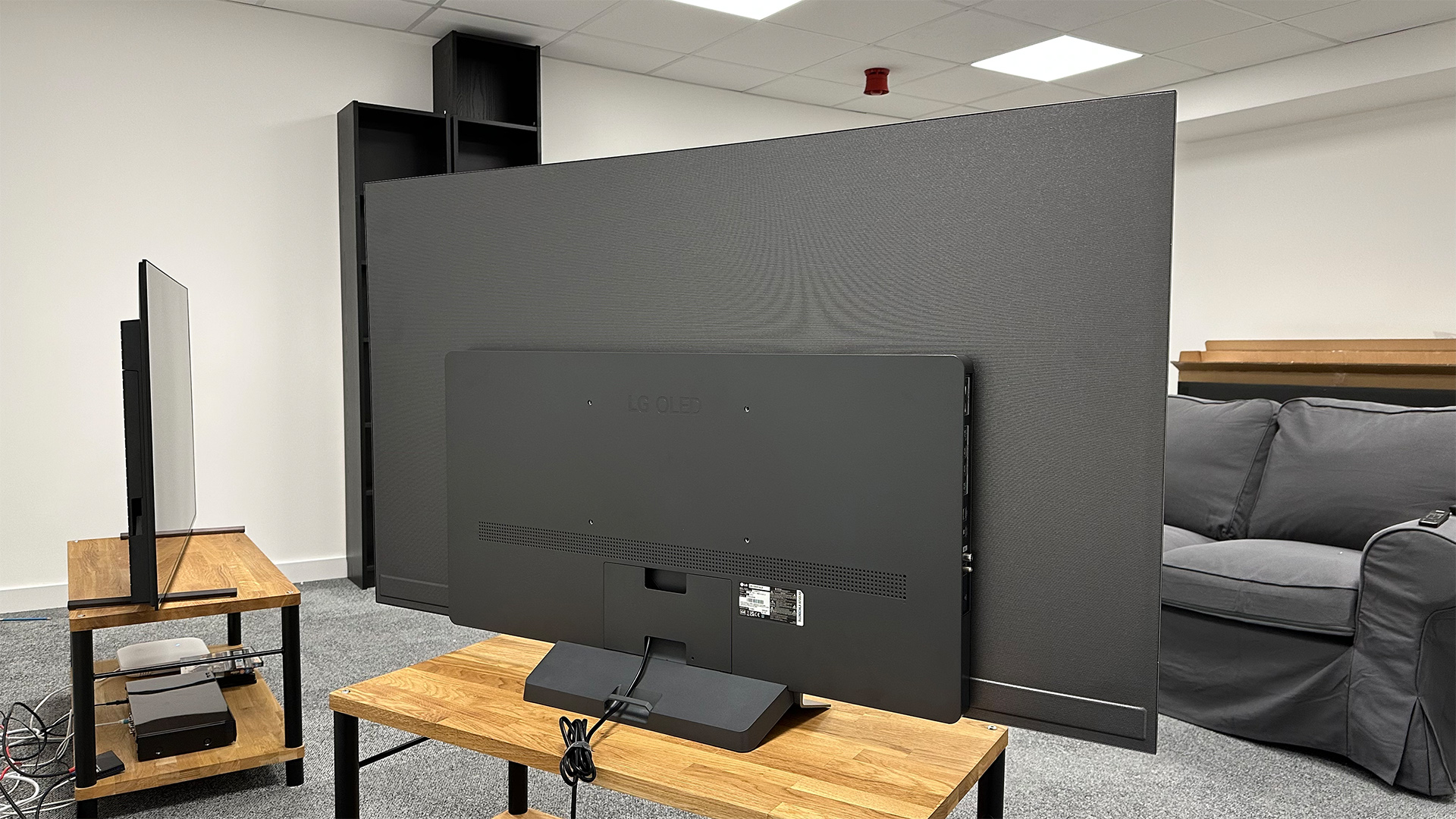
The C3’s general display hardware is unchanged from last year. It has the same panel, to which no new heat sink or MLA tech has been added. In LG Electronics parlance, it’s an OLED Evo with Brightness Booster, whereas the G3 has Brightness Booster Max.
However, as everyone hopefully knows by now, the performance of a TV is dictated by far more than its panel, which is why each brand’s OLED TVs perform differently to those of their rivals, despite the fact that they pretty much all use the same LG Display panels (QD-OLED TVs use panels sourced from Samsung Display).
LG’s bid to squeeze more performance from existing components is focused on the new Alpha 9 Gen 6 processor, which brings with it a handful of new picture-enhancing features such as AI Super Upscaling Pro, which is designed to upscale sub-4K sources while reducing noise but preserving intentional film grain; OLED Dynamic Tone Mapping Pro, which breaks the image down into 20,000 zones (rather than the 5000 of before) for separate HDR optimisation; Object Enhancer, which sharpens foreground characters and props; and HDR Expression Enhancer, which applies specific tone mapping to those foreground elements.
The new processor also adds up-mixing of all sound formats to 9.1.2 virtual channels (up from the C2’s 7.1.2), and a new Auto Balance Control feature that attempts to prevent certain frequencies from being drowned out by others so that, for example, midrange voices aren't smothered when bass increases.
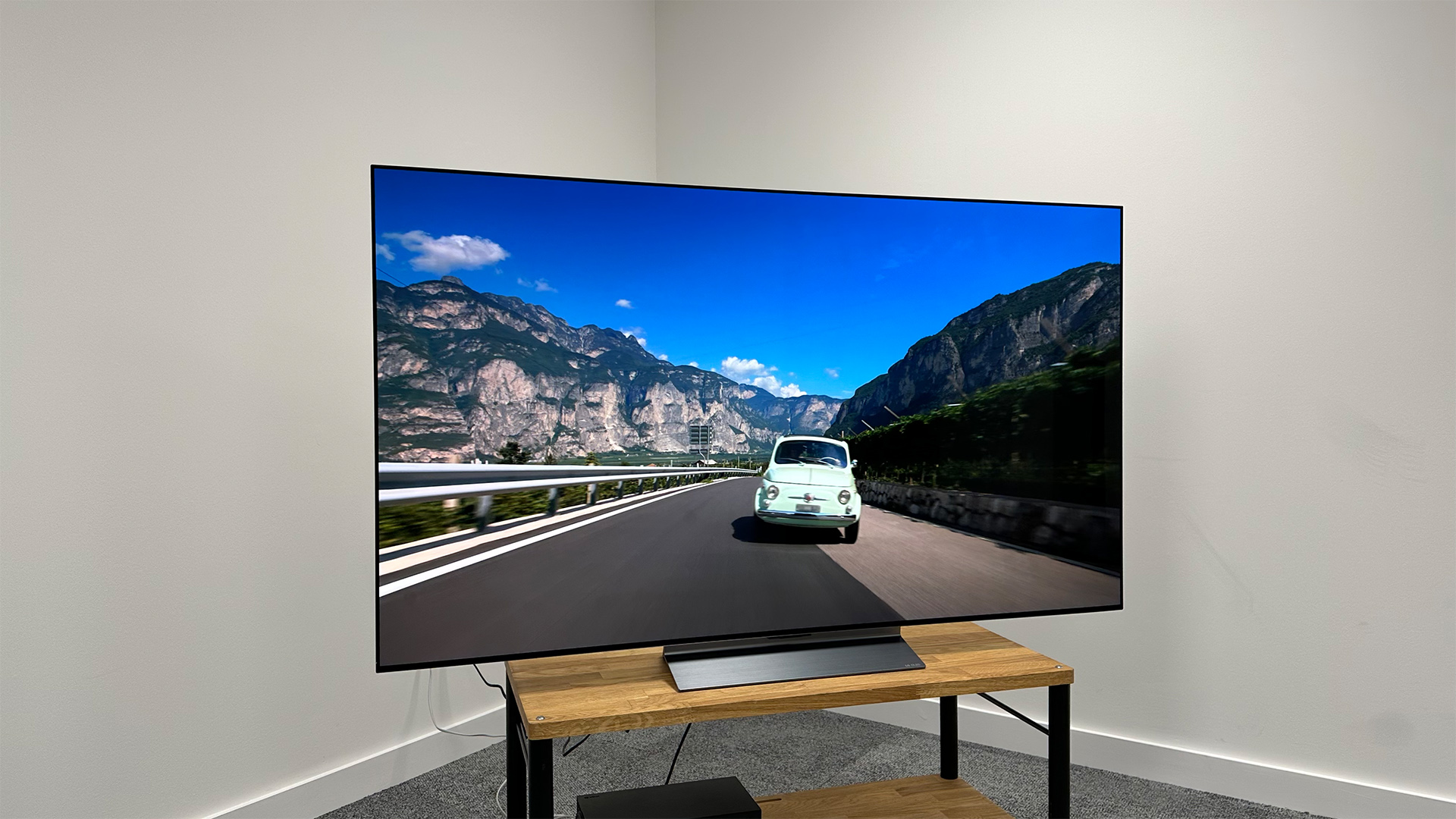
Screen size 65 inches (also available in 42in, 48in, 55in, 77in, 83in)
Type OLED
Backlight N/A
Resolution 4K
HDR formats HLG, HDR10, Dolby Vision
Operating system webOS 23
HDMI inputs x4 (4 x 48Gbps HDMI 2.1)
Gaming features 4K/120, VRR, ALLM, Dolby Vision game mode, HGiG
ARC/eARC eARC
Optical output? Yes
Dimensions (hwd, without stand) 83 x 144 x 4.5cm
LG’s 2023 TVs also feature a new version of webOS. webOS 23 looks at first glance very much like the previous version, but LG has reduced the number of pages to just two in a bid to make it more responsive. It’s worked, with the operating system proving a fair bit snappier in operation.
In order to reduce the number of home screen pages, LG has introduced what is essentially a folder system that sees related apps and features gathered into ‘cards’. That makes finding what you’re looking for a little more intuitive, but we rather wish that the row of cards could be moved to the home screen’s second page, as there will surely be some people who never open them. While we’re at it, dedicating so much space on the home screen to advertising seems rather cynical, though we’re well aware that LG is far from alone in this approach.
LG gives every impression of taking usability seriously, and the new Quick Settings menu is a nice addition, allowing you to put your most-used settings and features at your fingertips.
On that subject, the Game Optimiser menu is of course back for 2023. This allows you to quickly see game-related information (current frame rate, for example) and adjust game-related settings without needing to dive into the full menu system. This year, LG has added a dedicated sound sub-menu. Some might find it useful, but we’d argue that the Game Optimiser is now a bit bloated and was most useful when it provided access to just a handful of useful features. Perhaps LG should look at making it completely customisable for next year so that those of us who regularly tweak only a couple of settings when gaming don’t have to scroll through a bunch of others that we never touch.
Putting aside our Game Optimiser nit-picking, the C3’s core gaming specs are as brilliant as ever. You get four HDMI 2.1 sockets when most brands are still offering just two, and each one supports every major gaming spec, including 4K/120Hz, VRR and ALLM. Dolby Vision gaming is supported right up to that 4K/120Hz limit, and there’s a really well-implemented HGiG mode that makes it easy to get accurate HDR tone mapping from most HDR games. Input lag, meanwhile, is supremely low at under 10ms.
Picture

As with the G3 and previous LG OLEDs, our preferred preset for Dolby Vision content is Dolby Vision Cinema Home, which offers most of the accuracy of Dolby Vision Cinema but with a little extra brightness that helps the image pop from the screen. Playing Top Gun: Maverick, it’s easy to appreciate the C3’s balanced approach to colours and contrast. The image is refined, subtle and detailed, and some highlights do appear just a smidge brighter than they were from the C2. We are talking about a very fine margin here, though.
There’s good shadow detail throughout the movie, too, and while there is a slight paleness to low-light colours, it doesn’t appear to be as obvious as it was with the G3.
There’s absolutely nothing wrong with the C3’s delivery in isolation. It performs much like the C2 but with a percentage point or two of extra pop and sharpness. The problem comes when you run it next to the Sony A80L which, in its Dolby Vision Bright mode, is significantly more dynamic, with brighter highlights and stronger blacks (that still retain plenty of dark detail), yet it still delivers a level of authenticity and subtlety, particularly in terms of colours, that makes it an all-gain, no-pain scenario.
It could of course be argued that the Sony’s Dolby Vision Bright setting isn’t 100 per cent authentic, but the same is essentially true of the LG’s Dolby Vision Cinema Home setting, and the way the Sony enhances the signal is so well done that there’s no real reason to complain.
And when we drop both sets to their theoretically most accurate modes, Dolby Vision Cinema on the LG and Dolby Vision Dark on the Sony, the latter is still the more striking and impactful of the two TVs. Highlights are brighter and better defined, there’s even less banding, better contrast and overall more three-dimensionality to the image.
None of which is to say that the C3 isn’t very good. The general similarities between it and the Sony suggest there’s good colour accuracy across the two TVs, but the LG just doesn’t have the punch of the Sony.
Switching to The Batman in HDR10, we notice that the LG does have a very small amount of extra shadow detail when compared with the Sony, but the trade-off is less strikingly deep blacks. Again, there’s also less overall impact, with the Sony’s superior contrast making for a more exciting rendition that still rings true enough to the source material.
Of course, you can change presets and individual settings in the C3’s menus in order to add some more punch and solidity, but at every stage its Sony rival strikes the better balance of dynamism and authenticity.
Dropping down to Another Round in 1080p and standard dynamic range, the C3 is almost faultless. In its Filmmaker Mode, a small amount of fine detail is lost in dark parts of the picture, but less so than from the Sony A80L. What’s more, while it’s hard to compensate for this flaw with the A80L, a simple switch to the C3’s Cinema preset does the job here.
The upscaling is excellent, too, delivering a sharp and detailed image that’s also clean and free of obvious enhancement. There’s also a lovely warmth and richness to colours that doesn’t impair subtlety.
Sound
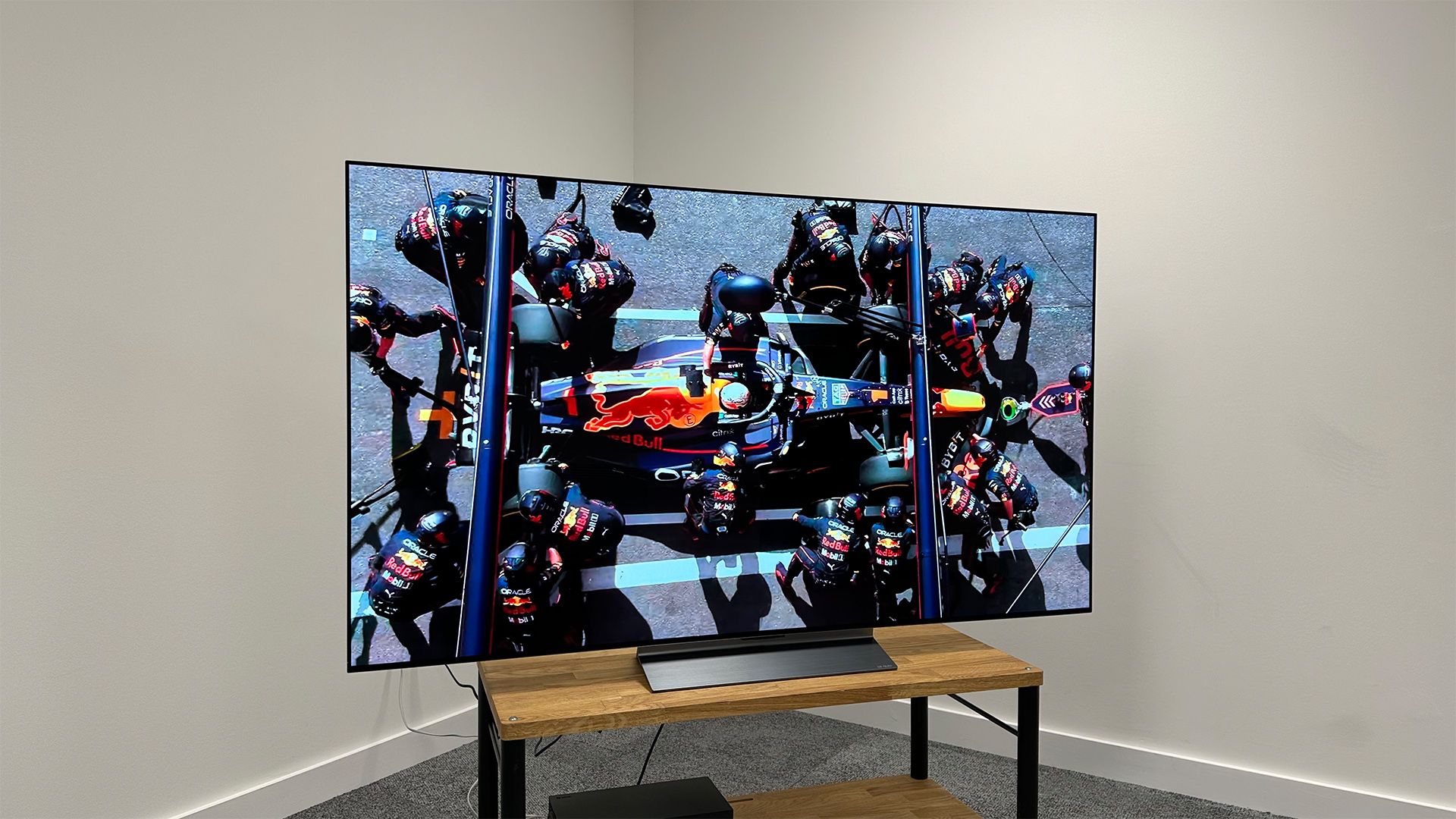
While broadly a great TV, the new G3 is badly let down by its audio performance and, unfortunately, that’s a theme that broadly continues with the C3. It’s true that this cheaper model actually has a little more punch and dynamic expression than its very limp-sounding sibling, but it’s still dull-sounding, even by the fairly low standards of TV sound.
As with the G3, you can inject some energy into the audio by switching on the AI Sound Pro feature, but this is also bafflingly harsh, aggressive and thin to an extent that we find unlistenable. The Dolby Atmos setting, meanwhile, is open, spacious and weighty, but also far too prone to rattly distortion when provoked by deep bass.
Keeping these settings switched off is the least-bad compromise, as you at least get the decent clarity and projection you need for everyday TV viewing.
Verdict
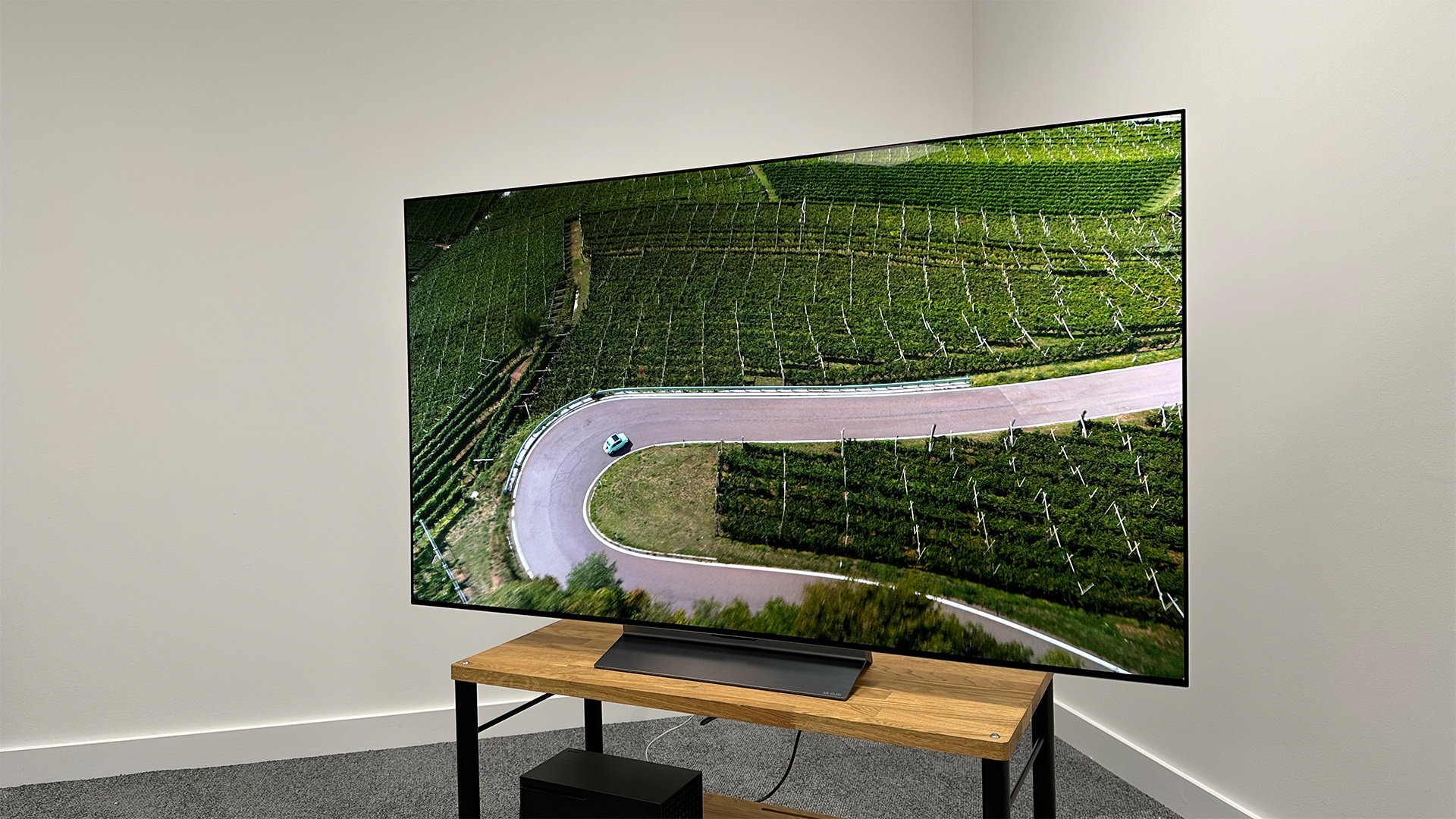
To reiterate, there’s nothing really wrong with the C3’s picture performance in isolation. It’s very similar to that of the C2, which we loved, but with just a tiny bit more oomph and even better upscaling.
The problem is that this minimalist approach to upgrades has coincided with an increase in price that puts the C3 in the firing line of rivals that have, seemingly, been lavished with more attention. Add relatively poor audio to the equation and it’s hard not to be disappointed with 2023’s C-series model, even though it’s still a very good TV in its own right.
SCORES
- Picture 4
- Sound 3
- Features 5
MORE:
Read our review of the Sony A80L
Also consider the LG G3
Read our Samsung QN95C review
Best TVs: the latest and greatest TVs, rated and ranked
Tom Parsons has been writing about TV, AV and hi-fi products (not to mention plenty of other 'gadgets' and even cars) for over 15 years. He began his career as What Hi-Fi?'s Staff Writer and is now the TV and AV Editor. In between, he worked as Reviews Editor and then Deputy Editor at Stuff, and over the years has had his work featured in publications such as T3, The Telegraph and Louder. He's also appeared on BBC News, BBC World Service, BBC Radio 4 and Sky Swipe. In his spare time Tom is a runner and gamer.
- Ketan BharadiaTechnical Editor
